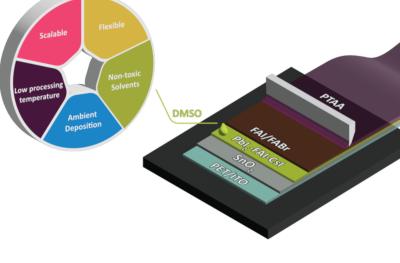Researchers develop new technique for flexible perovskite solar cells with improved efficiency
High power conversion efficiency (PCE) flexible perovskite solar cells (FPSCs) are highly desired power sources for applications like aerospace and flexible electronics. However, their PCEs still lag far behind their rigid counterparts. To address this issue, researchers from Tsinghua University and National Center for Nanoscience and Technology developed a new fabrication technique that increases the efficiency of FPSCs, paving the way for use of the technology on a much larger scale. The scientists reported a high PCE flexible perovskite solar cell by controllable growth of a SnO2 electron transport layer through constant pH chemical bath deposition (CBD).
The team developed a new chemical bath deposition (CBD) method of depositing tin oxide (SnO2) on a flexible substrate without requiring a strong acid, which many flexible substrates are sensitive to. The new technique allowed the researchers more control over tin oxide growth on the flexible substrate. Tin oxide serves as an electron transport layer in the FPSC, which is critical for power conversion efficiency.







